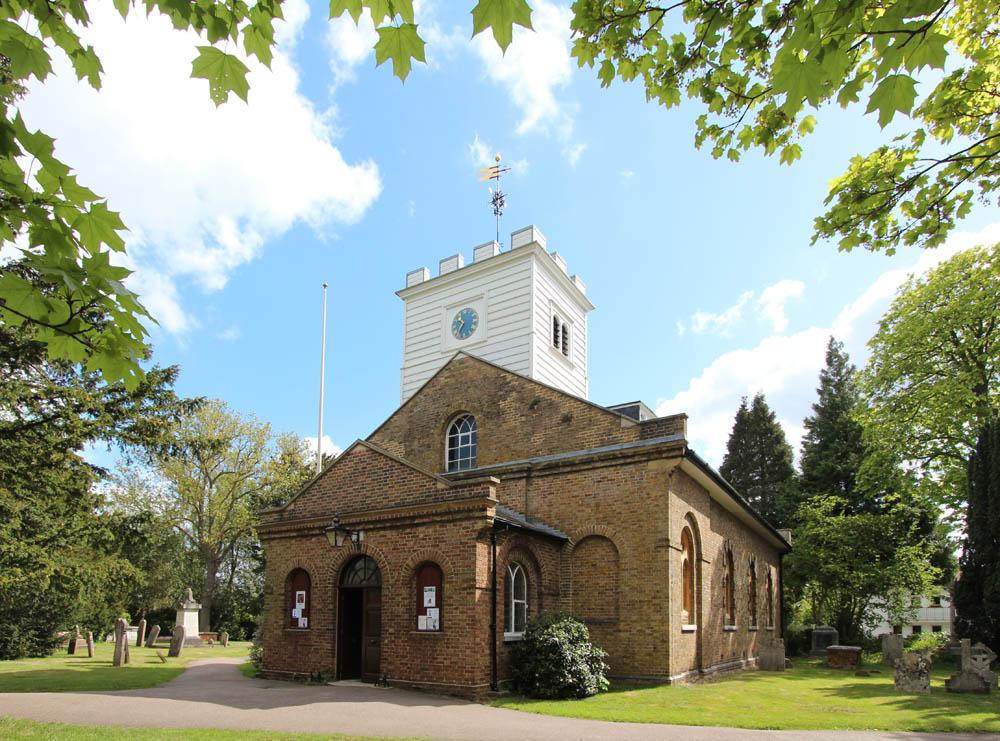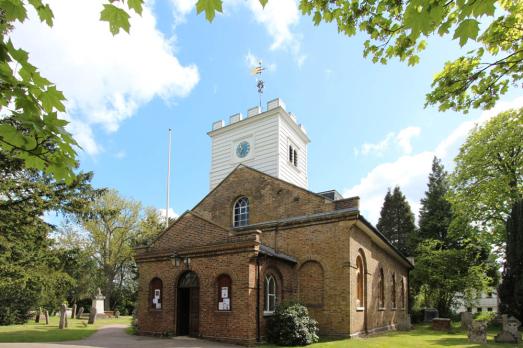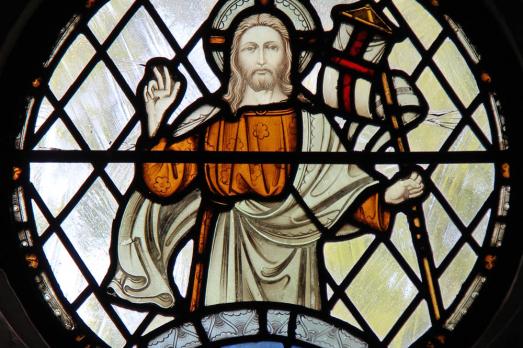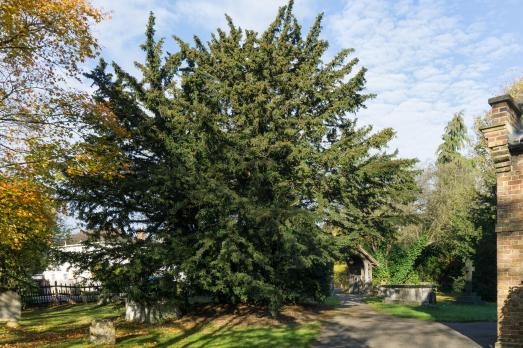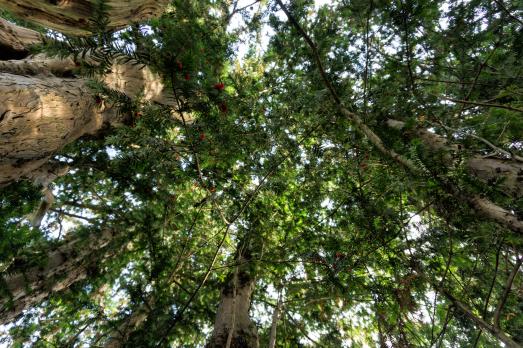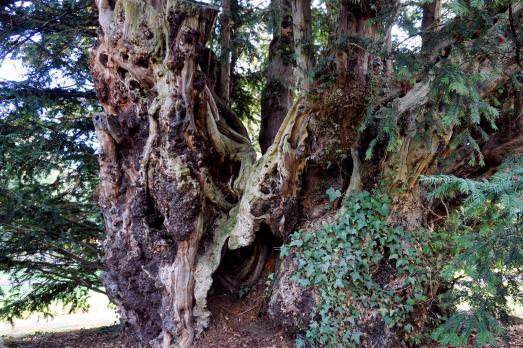It seems likely that the present church building stands on the site of the earliest church mentioned in 1250 AD. At some time between the Reformation and the late 17th century the dedication changed to St Andrew, possibly when only biblical saints were in favour.
Memorials in the church and gravestones in the churchyard and cemetery bear witness to a number of people famous in their time: TE Collcutt, architect (1840 - 1924); Harry Vardon and Dai Rees, golfers; members of the Pepys family descended from the great uncle of the diarist Samuel Pepys; Sir Charles Nicholson, architect. The Sarah Long memorial stone lies in the middle of the nave. The head of the stone carries the customary arms and crest the latter having been granted by Henry VIII to Sir Henry Long for gallantry at the siege of Therouenne in 1513
The first three windows in the south wall date from the close of the 19th century. The third is by CE Kempe, along with the third window in the north wall is also by Kempe.
The westernmost window in the north wall was designed by Archibald Nicholson in memory of his father Sir Charles who lived at The Grange Totteridge for many years. Bottle glass surrounds the heads of figures representing wisdom and courage. Sir Charles was born in 1808 and went to Australia in 1834. Three times Speaker of the legislative council of New South Wales, he was knighted in 1852 and created a baronet in 1859.
The processional cross is thought to be 13th century Italian work or possibly 14th or 15th century Spanish. It has medallions of the symbols of the four evangelists on one side and on the reverse of St John, the Virgin Mary, a pelican and the recording angel.
The altar was presented in 1936 in memory of Sir William Peat and his wife while the sanctuary lamp, specially designed to harmonise with it, was presented in 1950 as a memorial to one who died in World War II.

